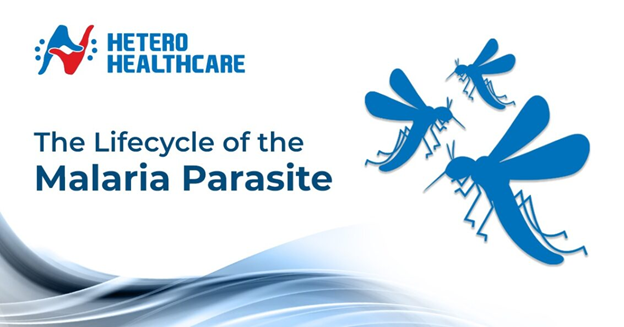Hetero Healthcare
18 Jun 2021

The National Cancer Institute defines Prostate cancer as "Cancer that forms in tissues of the prostate (a walnut-sized gland in the male reproductive system found below the bladder and in front of the rectum)" . Uncontrolled or malignant growth of cells in the prostate gland leads to prostate cancer. The prostate gland helps to produce and store fluids that aid in semen formation. According to the Cancer Statistics Report of 2020, India had around 41,532 males who had prostate cancer. The cumulative risk of developing prostate cancer at 0-74 years of age, according to the report, was found to be 1 in 125 males. According to the American Cancer Society, prostate cancer is more likely to develop in older men and non-Hispanic Black men. Prostate cancer is known to be the second leading cause of death in the USA. About one man in 41 dies of prostate cancer in the USA. Some prostate cancer grows slowly and is confined to the prostate gland only. They need minimal or no treatment. However, some prostate cancer becomes too aggressive and thus spreads quickly. On Men’s Health Week, we would let you understand prostate cancer through this simple article. This article explains the types of prostate cancer, its causes, risk factors, classification, symptoms, treatment, management, and prevention of prostate cancer, creating awareness among males.
The different types of prostate Cancer gives information about the type of the cell the cancer started in. The different types of Prostate Cancer include:
The scientific conclusion on how prostate cancer is caused is still under research. However, a simple explanation that is being put forward is that prostate cancer is caused by changes in the DNA of a normal prostate cell. DNA contains specific genes that help the cells to grow, divide, and increase. These genes are called Oncogenes. There is also another category of genes present inside DNA that keeps cell growth under control, repair damages to the DNA, and cause cells to die at the right time. These genes are called Tumor Suppressor Genes. Thus, when the tumor suppressor genes turn off, and oncogenes remained turned on due to mutations in the DNA, these lead to cancers (uncontrolled growth of cells).
Similarly, inherited mutations in the genes like BRCA1, BRCA2, CHEK2, ATM, PALB2, RAD51D, RNASEL, and HOXB13 also leads to an increased risk of prostate cancer. Some studies have also found that inflammation that leads to cell DNA damage of the Prostate Gland can also lead to prostate cancer.
The risk factors for Prostate Cancer Includes:
| Types of Grades | Type of Prostate Cancer |
| Grade 1-2 | Normal Prostate Cells. No cancer present |
| Grade3-5 | Cancerous cells |
| Grade 5 | Highly abnormal prostate cancer |
Gleason score is calculated by addition of two most common Gleason grades from the samples. For example, if the most common grade is grade 4, and the second most common is grade 5, then the overall Gleason score is 9. The Gleason scores in prostate cancer falls in the range from 6 to 10. The higher the Gleason score, the more abnormal or dangerous is the cancer.
Since prostate cancer is very slow in growth, the symptoms in its early stage are not present. However, as the cancer moves to be more advanced tumor, it will lead to the following signs and symptoms:
Patients who are above 50 years of age and have any family history of prostate cancer or are of African origin, or suffer from obesity, are advised to carry out a prostate screening test. The prostate cancer screening test includes two types of screening:
If the doctor finds any abnormality during screening, then he/she may recommend carrying out further diagnostic tests to get confirmation. The diagnostic tests include:
Prostate cancer is ‘staged’ according to tumour size, whether it has spread to the lymph nodes and whether it has spread into the bones or to other parts of the body. This information is used to help decide the best treatment.
The treatment of prostate cancer depends on many factors like the tumor's aggressiveness, whether the patient will receive any benefit if he/she undergoes treatment, and finally, the patient's overall health condition.
When prostate cancer is in its initial stage, immediate treatment is not necessary. Doctors advise patients to be under active surveillance, including regular follow-up blood tests, rectal exams, and prostate biopsies to check the progress of cancer.
The US FDA has approved more than 30 drugs to treat prostate cancer during the advanced stage. AHABIR 250MG TABLET of Hetero Healthcare Limited is also prescribed to treat prostate cancer. The drug contains Abiraterone Acetate as the significant active pharmaceutical Ingredient. It works by stopping the body from producing testosterone (male hormone), thereby slowing the growth of prostate cancer.
Another method that is used to treat prostate cancer is surgery. In surgery, the prostate gland is removed along with few lymph nodes and surrounding tissues by radical prostatectomy. Surgery is done only after the physician thinks it is necessary.
The other methods of treating Prostate cancer include:
Prostate cancer can be prevented by the following methods:
References
Hetero Healthcare

Hetero Healthcare27 May 2024
The Thyroid: Understanding Your Body's Master Gland
The thyroid gland, a small butterfly-shaped gland located at the base of your neck, plays a critical role in regulating your metabolism.

Hetero Healthcare25 May 2024
Taking Control of Your Breath: Understanding and Managing Asthma
Asthma can feel like a constant battle for air, leaving you breathless and wheezing. But with knowledge and the right approach, you can take control of your asthma and live a full, active life.

Hetero Healthcare30 Apr 2024
A Comprehensive Guide to Malaria
Malaria, a mosquito-borne infectious disease, continues to pose a significant threat to global health. At Hetero Healthcare, we are committed to raising awareness about this preventable illness and empowering individuals with knowledge to protect themselves. This comprehensive blog delves into the causes, symptoms, and effective prevention strategies for malaria.

Hetero Healthcare30 Apr 2024
A Guide to Parkinsons Disease for Patients and Caregivers
At Hetero Healthcare, we understand the profound impact Parkinson's disease (PD) can have on individuals and their loved ones.